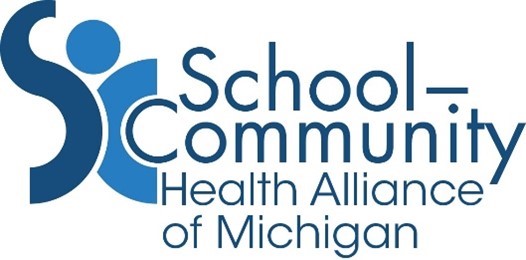
The first school linked health center in Michigan, the Young Adult Health Center (now the Corner Health Center), opens in Ypsilanti. Michigan is one of the first in the nation to begin operating teen health centers.

Gov. James Blanchard and Dr. Gloria Smith, then-director of the state health department, commission the Five-Year Adolescent Health Plan. Dr. Smith convened an Adolescent Health Advisory Group to look at the health needs of adolescents in Michigan, in particular to address teen pregnancy, culminating in a call for the creation of 100 schoolbased health centers in the state. Grants from the state health department establish 20 schoolbased/ school-linked health centers and programs.
State health department renames the effort the Adolescent Teen Health Center program.
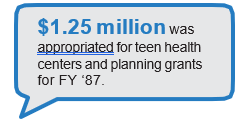
$1.25 million was appropriated for teen health centers and planning grants for FY ‘87.
First Request for Proposals (RFPs) are issued. The state health department now supports 10 teen health centers and six planning grants.
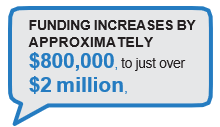 which enables the state health department to bring the total number of teen health centers to 16, and planning grants to 12.
which enables the state health department to bring the total number of teen health centers to 16, and planning grants to 12.
By December, five alternative model projects were in operation in addition to the teen health centers and planning grant projects.
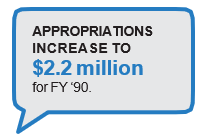 Two alternative models and 3 teen health centers are added, bringing a total of seven alternative models and 19 health centers funded by the state.
Two alternative models and 3 teen health centers are added, bringing a total of seven alternative models and 19 health centers funded by the state.
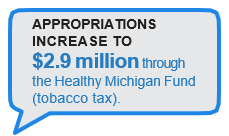 Three new teen health centers are funded, bringing total to 7 alternative models and 22 teen health centers. Additionally, the Kellogg Foundation establishes $4 million in grant support for 13 centers in Detroit.
Three new teen health centers are funded, bringing total to 7 alternative models and 22 teen health centers. Additionally, the Kellogg Foundation establishes $4 million in grant support for 13 centers in Detroit.
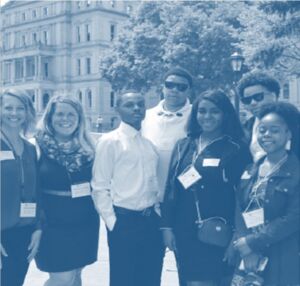 Representatives from School-Based/ School-linked health centers.
Representatives from School-Based/ School-linked health centers.
Michigan now has 29 centers not funded by the state health department (nine more than receive state funding),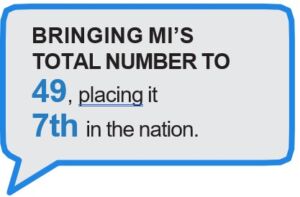 More than 1,200 SBHCs exist in the U.S.
More than 1,200 SBHCs exist in the U.S.
Gov. John Engler eliminates the state funding for SBHCs in the state budget through Executive Order.
Parents, students, and staff rally at the State Capitol and back in the districts.
The funding was restored but moved to the School Aid Budget (31a) the same day as the rally.
There were 50 programs at the time. Conditions of state funding included competitive grant processes and requirements to bill Medicaid and commercial insurance.
School-Community Health Alliance of Michigan (SCHA-MI) was established as the leading State association in Child and Adolescent Health Programs.
Intensive lobbying resulted in funding being restored in February 2002. Three of the four centers that closed in 2001 were reopened.
Funding for the program moved to the Michigan Department of Education. New requirements called for a competitive funding process for FY 2003.
SCHA-MI works with the state health department and federal Medical Services Administration to design a Medicaid structure to seek federal match for state general funds of the SBHC program. The state general fund allocation enables the state to expand the number of centers funded by the state from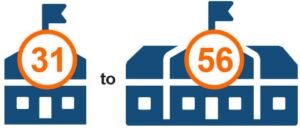
The Centers for Medicare and Medicaid Services approved an amendment to the state Medicaid plan, adjusting the Medicaid Health Plan rate for outreach to school-aged children.
As a result, MI’sprogram name formally becomes the Child and Adolescent Health Program
(CAHCs). The Michigan Department of Education and state health department collaboratively issue a competitive RFP for $8.8 million for the development of new centers through planning grants, and to support existing centers. For the first time, Michigan expands its target population to include children 5-10 years old
In response to the RFP issued in December 2004, a total of 68 awards are distributed.
Senator Debbie Stabenow is successful in adding first ever language to the
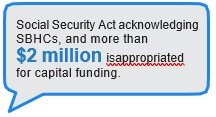
New model added to CAHC Program – called the School Wellness Program – which provides school nursing and mental health services.
The CAHC Network Demonstration Project begins. This model includes centralized primary care hub with 3 to 5 satellite schools providing school nursing and behavioral health services that work in conjunction with the Pathways to Potential staff at each school. Three pilots within Muskegon and Detroit began operating after significant investment and preparation for a multi-year effort.
In response to the Flint Water Crisis, established 3 CAHCs within the City of Flint at Richfield K-6 Academy, Carman-Ainsworth High School and Kearsley High School.

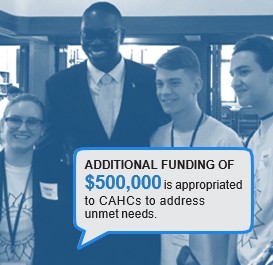
The Child and Adolescent Health Program celebrates 30 years. To address mental health needs of students following the school shooting at Stoneman Douglas H.S. in Florida, new education funding under subsection 31n is created for mental health services in schools, with an eye on reimbursable sustainability.
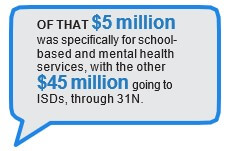 The new centers for mental-health-only services are termed “E3” (Expanding, Enhancing, Emotional Health) by the state health department.
The new centers for mental-health-only services are termed “E3” (Expanding, Enhancing, Emotional Health) by the state health department.
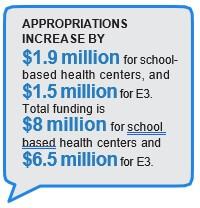
COVID-19 hits, closing all schools. Centers move swiftly to telehealth services, including
telephone visits with patients. By fall, schools re-open with masking and distancing at most schools.
CAHCs provide guidance to schools on safety, screening and testing.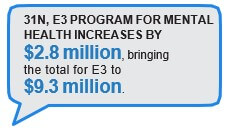
COVID-19 pandemic continues. Studies show children and youth have suffered from isolation, depression, and anxiety. Overall, children are behind in vaccines, chronic conditions care and other therapies they received prior to the pandemic. Child and Adolescent Health Centers receive an unprecedented increase of
With their mental and physical wellness already severely compromised, kids suffer another trauma as school shootings pick up in frequency, including here at home in Oxford, Michigan. Many legislators and Gov. Gretchen Whitmer hear our stories, in search of solutions that can help turn the corner for our kids. The need is met with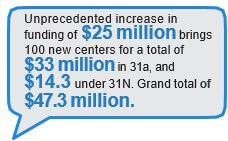
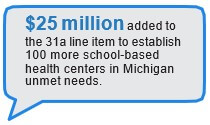 with priority given to those in counties where there are none
with priority given to those in counties where there are none
.
